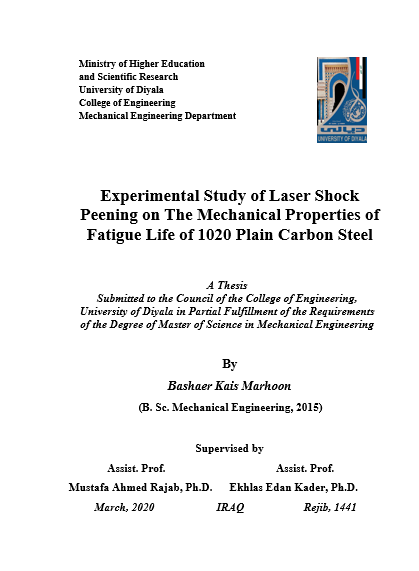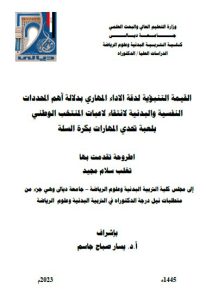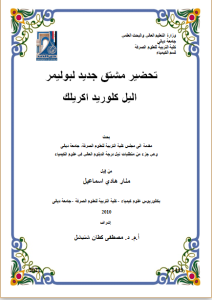ABSTRACT
A lot of mechanical structures that work with alternating applied loads affect structure and especially surface properties. Enhancing surfaces to have better performance and resistance to failure is a crucial matter.
Two surface treatments were considered in this study. Firstly: the classical heat treatment with 850°C for (15) minutes, then cooling with water and, secondly laser beam treatment with variable (wave length, energy and pulses direction). To have a good indication of treatments, some mechanical properties were studied.
Tensile tests are performed to know ultimate tensile strength and total elongation percent. It has been shown that laser beam treated samples have higher tensile strength (610 MPa for sample with treatment by laser of wave length 532nm and energy 550 mJ and 3 pulses on two side) compared with samples without treatment and samples treated of 850 °C of 15 minutes then cooling with water. Max total elongation observed in sample without treatment then in sample treated of 850 C° of 15 minutes then cooling with water compared with samples treated with laser.
Hardness test results showed the samples treated with classical heat treatment has better values than that of sample without treatment . While samples treated with laser showed a great enhancement in hardness values compared to samples without treatment and samples treated of 850 °C of 15 minutes then cooling with water.
Fatigue failure as a primary cause of failure in cyclic loading was studied. The results of fatigue limit in surfaces treated with laser beam samples generally showed a noticeable improvement (74%) compared to fatigue limits examination of received metal and heat treated metals of 850 °C of 15 minutes then cooling with water . The highest fatigue limit was 362 MPa with short wave length (532)nm and low energy of laser beam. When there was a decrease in stress values, the number of cycles increased and thus extending the performance life of the part.
To have better conclusion about fatigue failure, the fracture surface of samples treated with laser was examined using SEM test. It is observed that the surface growth of fatigue incision in samples with (532) nm wave length was less rough compared to samples with (1046) nm wave length which was rough to some extent. Using high energy laser beam caused the fracture surface to have near brittle fracture due to growth in the particle size.
Due to rapid cooling of the area near laser spots, residual stresses were formed. Calculating these stresses using XRD test showed that sample with treatment by laser of wave length 532nm and energy 550 mJ and 3 pulses on two side has max compressive residual stress (-1780.11) MPa which is beneficial in fracture resistance.
Optical microscope for all samples were studied to examine phases distribution and how heat treatment affect this phase distribution and the transformation of phases.




